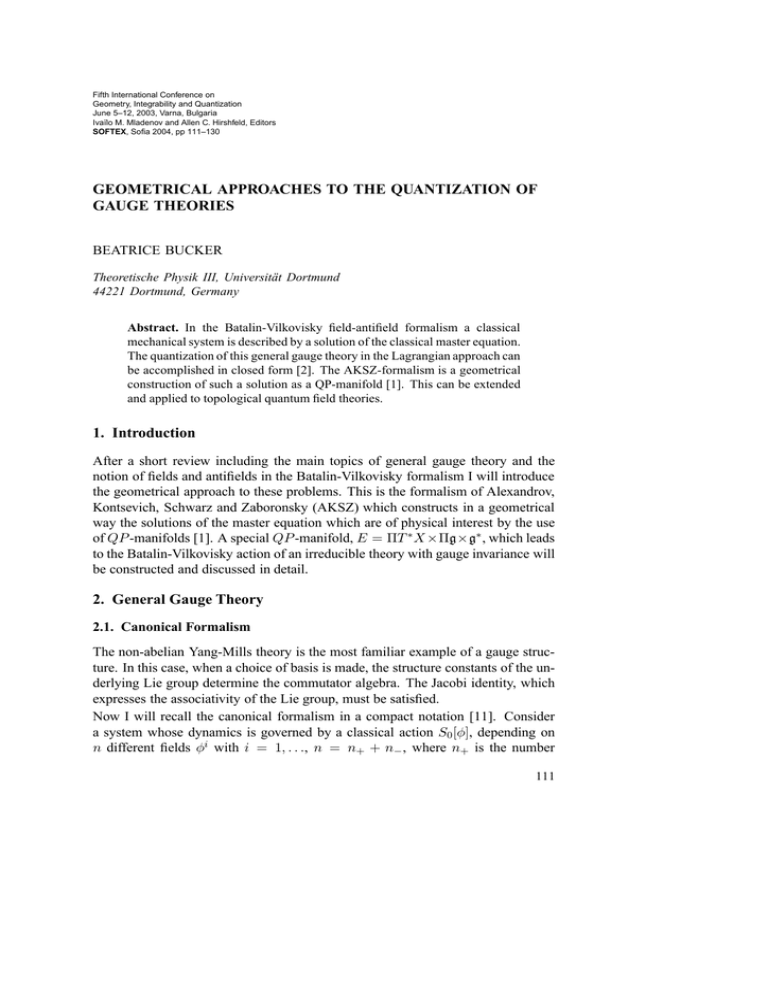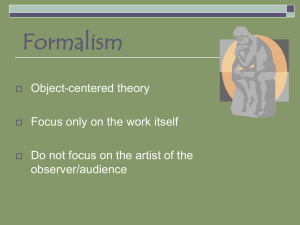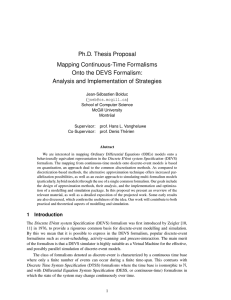Document 10584062
advertisement

Fifth International Conference on Geometry, Integrability and Quantization June 5–12, 2003, Varna, Bulgaria Ivaïlo M. Mladenov and Allen C. Hirshfeld, Editors SOFTEX, Sofia 2004, pp 111–130 GEOMETRICAL APPROACHES TO THE QUANTIZATION OF GAUGE THEORIES BEATRICE BUCKER Theoretische Physik III, Universität Dortmund 44221 Dortmund, Germany Abstract. In the Batalin-Vilkovisky field-antifield formalism a classical mechanical system is described by a solution of the classical master equation. The quantization of this general gauge theory in the Lagrangian approach can be accomplished in closed form [2]. The AKSZ-formalism is a geometrical construction of such a solution as a QP-manifold [1]. This can be extended and applied to topological quantum field theories. 1. Introduction After a short review including the main topics of general gauge theory and the notion of fields and antifields in the Batalin-Vilkovisky formalism I will introduce the geometrical approach to these problems. This is the formalism of Alexandrov, Kontsevich, Schwarz and Zaboronsky (AKSZ) which constructs in a geometrical way the solutions of the master equation which are of physical interest by the use of QP -manifolds [1]. A special QP -manifold, E = ΠT ∗ X ×Πg×g∗ , which leads to the Batalin-Vilkovisky action of an irreducible theory with gauge invariance will be constructed and discussed in detail. 2. General Gauge Theory 2.1. Canonical Formalism The non-abelian Yang-Mills theory is the most familiar example of a gauge structure. In this case, when a choice of basis is made, the structure constants of the underlying Lie group determine the commutator algebra. The Jacobi identity, which expresses the associativity of the Lie group, must be satisfied. Now I will recall the canonical formalism in a compact notation [11]. Consider a system whose dynamics is governed by a classical action S0 [φ], depending on n different fields φi with i = 1, . . ., n = n+ + n− , where n+ is the number 111





